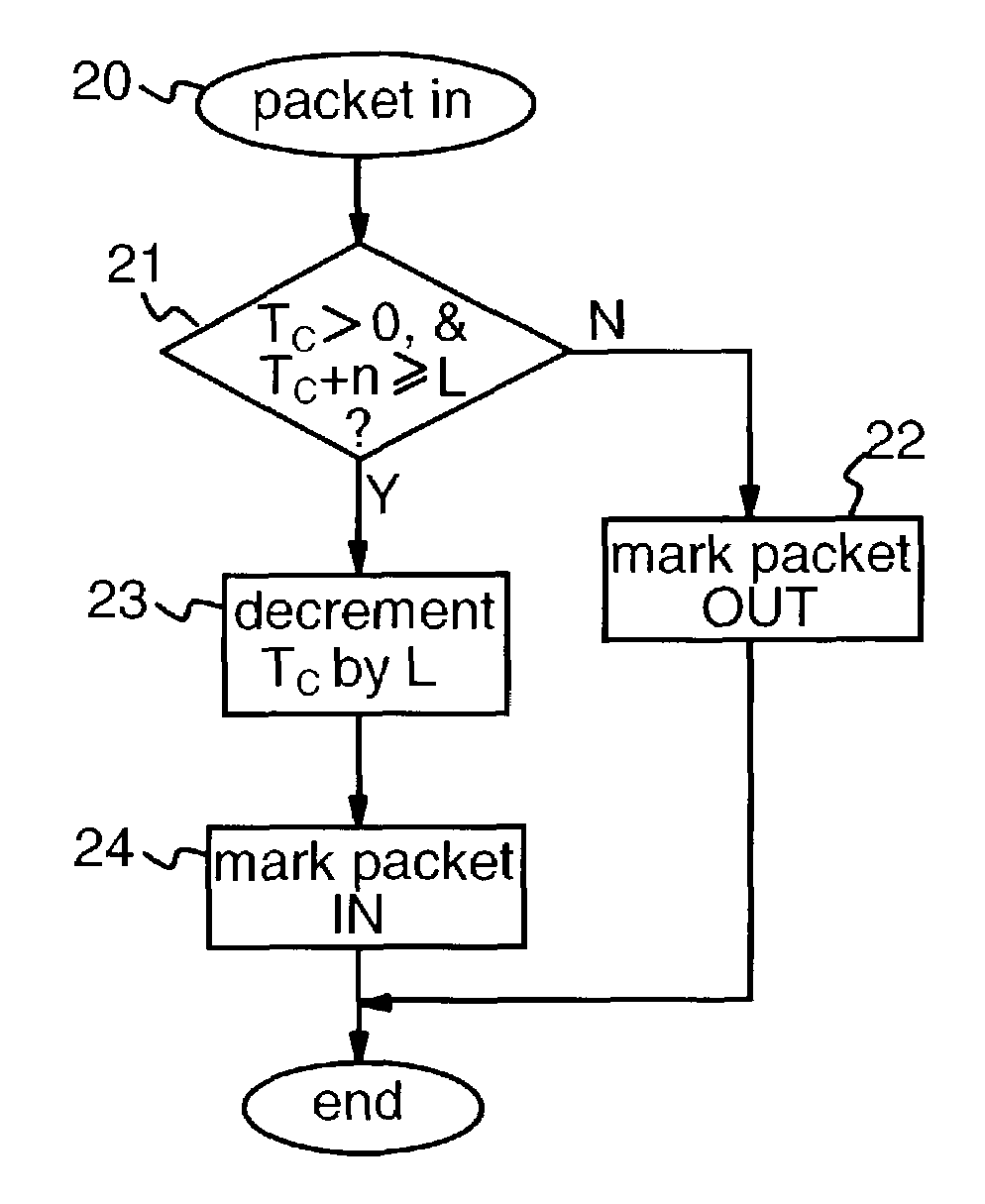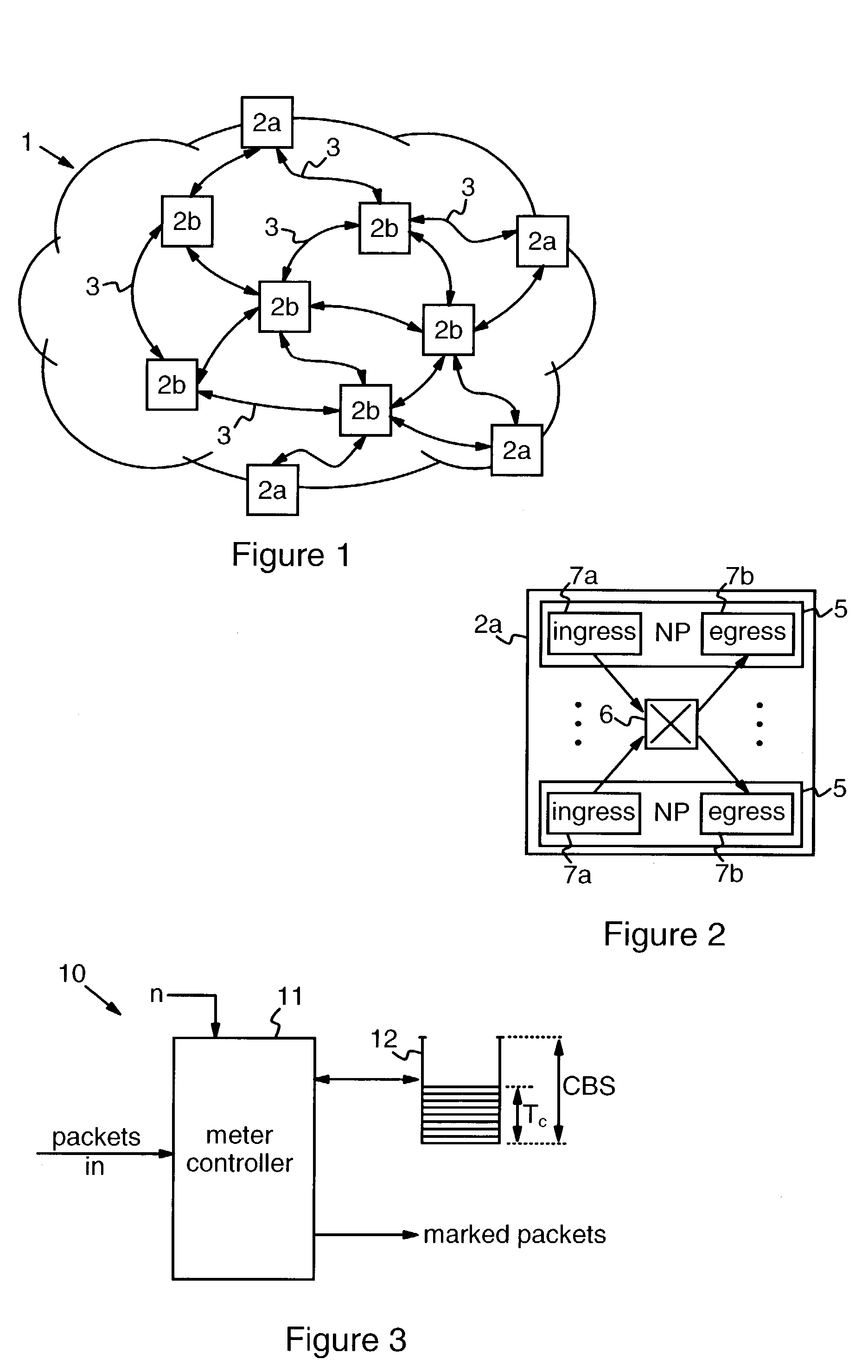Traffic metering in data networks
a traffic meter and data network technology, applied in data switching networks, frequency-division multiplexes, instruments, etc., can solve the problems of insufficient tokens to accept all packets, disadvantages increasing with packet length, and strict and loose conformance bucket meters that cannot meet the requirements of multimodal packet length distributions. achieve the effect of maximum flexibility in conformance level
- Summary
- Abstract
- Description
- Claims
- Application Information
AI Technical Summary
Benefits of technology
Problems solved by technology
Method used
Image
Examples
Embodiment Construction
[0033]FIG. 1 shows a simple example of a communications network 1 comprising a plurality of network devices, here routers 2a, 2b, interconnected by links 3. In this example the network 1 represents a subnet of an IETF Differentiated Services (DiffServ) network. The DiffServ architecture is a scaleable approach for providing service differentiation in IP (Internet Protocol) networks. The architecture acknowledges that IP networks are composed of homogeneously administered subnets, or “clouds”, and defines mechanisms to apply policy decisions at cloud boundaries. These mechanisms are based on traffic classification, metering, marking and policing at cloud boundaries, and uniform treatment of traffic aggregates inside the cloud. Thus, network 1 will typically form part of a larger network such as the Internet, with the four routers at the edge of the cloud (edge routers 2a) having external links (not shown) to devices outside the cloud. The remaining six routers in FIG. 1 are core rout...
PUM
 Login to View More
Login to View More Abstract
Description
Claims
Application Information
 Login to View More
Login to View More - R&D
- Intellectual Property
- Life Sciences
- Materials
- Tech Scout
- Unparalleled Data Quality
- Higher Quality Content
- 60% Fewer Hallucinations
Browse by: Latest US Patents, China's latest patents, Technical Efficacy Thesaurus, Application Domain, Technology Topic, Popular Technical Reports.
© 2025 PatSnap. All rights reserved.Legal|Privacy policy|Modern Slavery Act Transparency Statement|Sitemap|About US| Contact US: help@patsnap.com



